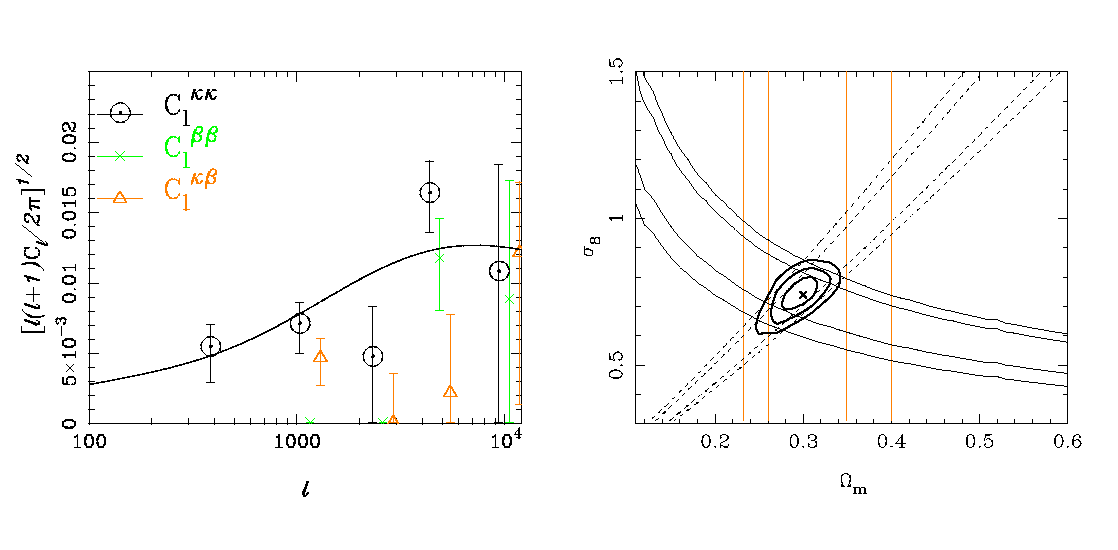Classifying
Objects by
Medium-Band
Observations
- a spectrophotometric
17-filter survey -
project: the shear power sepctrum

Left hand side: shear power spectrum as measured (circles) and predicted (solid curve) for a flat Universe with a cosmological constant. The other measurements are tests for systematic effects in the data. The low amplitude of these indicates the COMBO-17 dataset to be free of major systematic effects.
Right hand side: constraints for cosmological parameters as estimated from COMBO-17 (black solid contours) along with constraints obtained from the 2dF Galaxy Redshift Survey (vertical orange contours) and from the CMB (dashed contours). The joint constraints from combining the three methods are shown as heavy black contours.
One of the most exciting areas of research in cosmology
today concerns the nature and distribution of the so-called
"dark matter", which comprises the vast majority of the total
mass in the Universe. Although this matter is undetectable
with conventional astronomical methods (hence, the name "dark"),
we can detect its presence from its gravitational influence on
light travelling through its potential.
By measuring distortions introduced into the images of far-away
galaxies, we can deduce information about the intervening matter
distribution through which the galaxies' light has passed. By
making such measurements of the "shear distribution" over large
enough pieces of sky, we can build up a picture of the large scale
distribution of the dark matter in the Universe.
One important quantity we can measure in this way is the
"shear power spectrum" which contains all the two-point
statistical information of the shear field. Since this quantity
is simply a weighted projection of the underlying 3-d mass power
spectrum, it represents a powerful probe of the clustering
properties of the dark matter on cosmological scales. Measuring
the shear power spectrum can also lead to strong constraints on
cosmological parameters, in particular the matter density of the
Universe and the normalisation of the mass power spectrum.
We have performed a full Maximium Likelihood analysis to measure
the shear power spectrum from the COMBO-17 survey. These measurements
are shown in the above figure along with the parameter constraints
we find from combining our measurements with the 2dF Galaxy Redshift
Survey and the most recent CMB experiments.
Contact person: Michael Brown, ROE
Back to COMBO-17 science page
Last update Sep 19, 2002, CW
